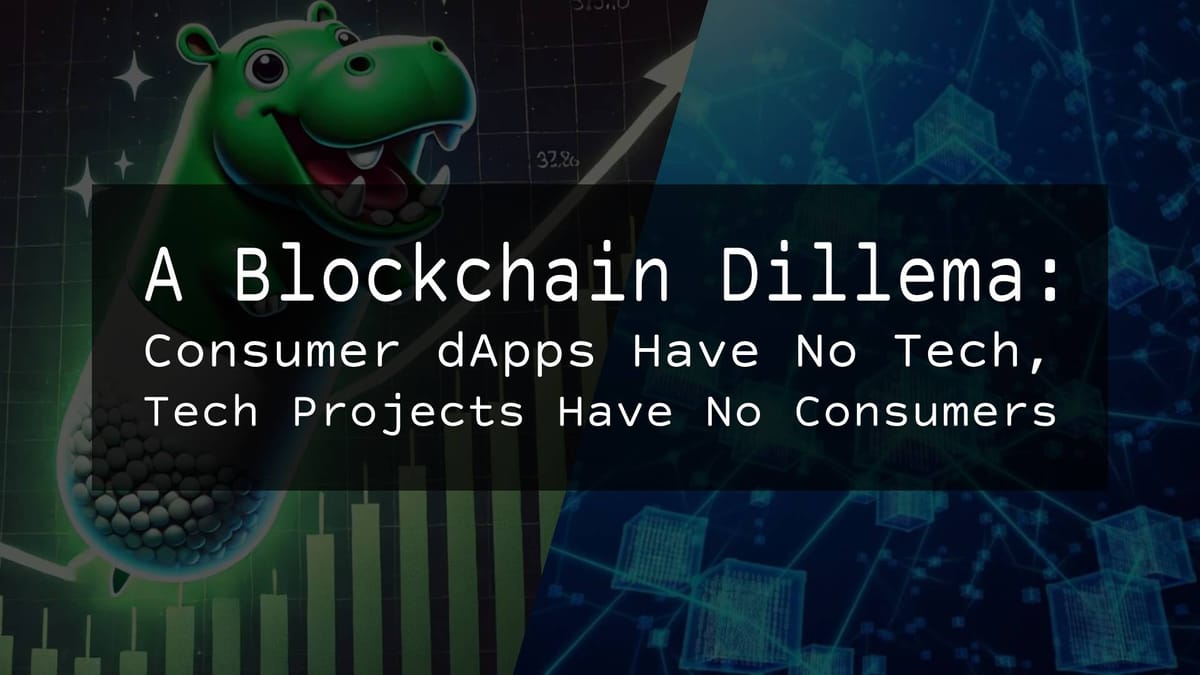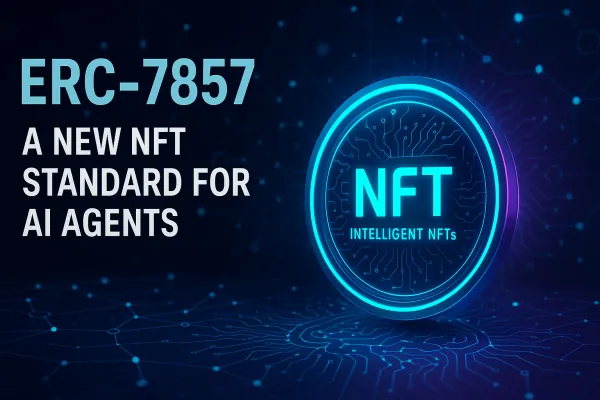A Blockchain Dilemma: Consumer dApps Have No Tech, Tech Projects Have No Consumers

Introduction: When Simplicity Wins
The crypto world is full of oddities, but here’s one of the strangest: the most technically advanced projects often fail to get users, while the simplest ideas sometimes memes go viral.
Blockchain is full of contradictions. One of the most puzzling is how something like pump.fun a meme token launcher with almost no technical depth can gain millions of users and dominate on-chain activity, while technically rich projects on other chains struggle to stay relevant. Pump.fun succeeded not because of groundbreaking cryptography or infrastructure but because it offered instant, effortless gratification in a familiar cultural format. Meanwhile, many high-tech projects remain stuck in proof-of-concept limbo, unable to attract even a fraction of the users.
This disconnect reveals a deep structural dilemma in blockchain: consumer apps have no tech, and tech projects have no consumers.
Why Is This Happening?
Solving Tomorrow’s Problems Today
Many of the most sophisticated blockchain projects are trying to solve future problems such as privacy-preserving computation, recursive zk rollups, or idealized scalability today. These are meaningful innovations, but they do not respond to the actual needs or pain points of current users. Because these projects aren't solving urgent, real-world problems, the only people using them are speculators hoping for a future airdrop. This creates an artificial sense of traction, but no real value.
Furthermore, this misalignment skews the industry’s capital flow. Chains want to appear “big” and vibrant, so they invest in volume-generating apps that produce impressive looking transaction graphs even if the apps themselves are meaningless. As a result, we often see networks filled with “GM dApps” that do nothing more than send empty "gm" messages on-chain every day, just to keep some activity going.
No Real Value Provided
Many tech-heavy projects are building toward a world that doesn’t exist yet or that may never arrive. Regulatory environments, user behaviors, and market structures aren’t aligned with what they’re building. Success stories in this space often involve either creating overwhelming transaction volume through speculation or manufacturing short-term hype cycles, like we saw with meme tokens. But hype always fades. What matters is what remains after the hype collapses.
A meaningful project shouldn’t go to zero when interest fades. If it does, it probably had no core value to begin with.
Bonus: The Web2 Blindspot
Another issue plaguing blockchain native teams is their limited familiarity with Web2 fundamentals. Many builders in this space are excellent cryptographers or smart contract developers but lack experience with DevOps, AI, product design, or user experience. This gap often leads to clunky, buggy, or entirely missing products. In contrast, “dual-passport” builders those who are fluent in both Web2 and Web3 tend to ship better, more usable projects. These hybrid teams understand what real users want and how to deliver it.
What Are the Solutions?
Projects must either become more relevant to today’s users, or they must help shape the world into one where their technology becomes useful. This can mean aligning with governments and legal frameworks, as some real-world asset (RWA) initiatives are attempting to do. Or it can mean scaling Ethereum in ways that preserve decentralization while offering tangible utility for consumers. But this must be done in a more thoughtful, more reliable way. It’s not enough to claim decentralization on paper; it has to be real and provable in the architecture itself.
One crucial example is the implementation of sequencers. Many current Layer 2s rely on centralized sequencers, which raises valid concerns. Users ask: is this really decentralized? Is it secure? What happens if the sequencer is compromised or shut down? Are the operators extracting MEV at the expense of users? These doubts erode trust. A more reliable approach would involve lighter-weight, decentralized sequencer networks from the outset ones that don’t rely on single points of failure and that provide credible neutrality. Without resolving these foundational concerns, even the most technically brilliant systems will struggle to gain traction with real users.
And that’s exactly why consumer-facing features especially DeFi primitives and social mechanics are more essential than ever. Once the technical foundation is strong, the next layer must focus on meeting users where they are today. That means solving real, immediate problems: enabling users to earn, trade, and interact without needing to navigate dozens of confusing interfaces or learn obscure blockchain terminology. Projects that want to survive must start by addressing the practical needs of everyday users, not hypothetical scenarios ten years down the road. Only then can web3 truly expand beyond speculation and into widespread, meaningful adoption.
Our Vision on Vexom AI at First Point
At First Point, we believe that DeFi remains the most meaningful use case for blockchain. But even DeFi has a major problem: only about 12% of all crypto users interact with it on-chain. The vast majority still rely solely on centralized exchanges. This gap is a massive onboarding failure. We think the problem lies not in user motivation, but in product design.

Vexom AI was born from the belief that blockchain should be simple, understandable, and rewarding from the first click. Users should be able to choose a chain, lean back, and instantly see yield opportunities for their assets. They should be able to avoid scams and bad actors. Degens should be able to access data-rich tools without opening 20 browser tabs. And non-technical users should be able to deploy smart contracts with a single click.
A Glimpse Into the Future: No-Code AI Agent Marketplace
We’re soon launching a no-code AI agent marketplace inside Vexom AI. But this isn’t just any no-code platform. You’ll be guided by an AI agent specifically designed to help you create and deploy your own AI agent without writing a single line of code. These agents will be tokenized, transferable, and represented by NFTs that encapsulate their ownership. This unlocks a new kind of on-chain utility where what you mint isn’t just a meme it’s a working, valuable tool.
So what makes this system more valuable than a meme token? The answer is simple: it has a real product behind it.
Unlike meme tokens, which often rely purely on hype, these AI agents deliver real functionality. They are tangible, usable products. Your token isn’t just a speculative asset it’s directly tied to an agent that brings utility to both you and your community. Through this approach, we aim to move beyond hype cycles and contribute to a future where public goods are not only sustainable and permissionless, but also truly useful and rewarding for everyone.
Conclusion
The blockchain space is caught in a tug-of-war between meaningless hype and underutilized innovation. Pump.fun is not the problem but it does highlight that simplicity and usability win, even when tech is minimal. At the same time, we need to ensure that truly valuable technologies aren’t ignored simply because they’re ahead of their time.
It’s time to bridge the gap. The future of blockchain will belong to projects that blend deep tech with deep empathy products that understand people just as much as they understand protocols.
Try Vexom AI Now 👉 https://vexom.ai/




